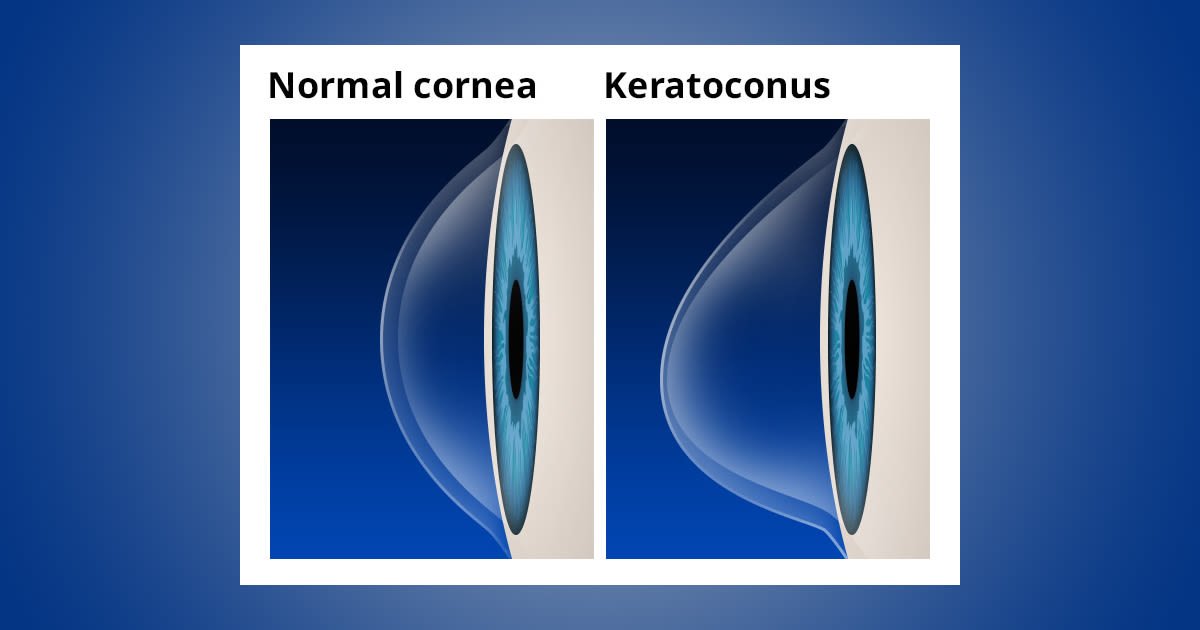Treating Keratoconus
When we say “we give complete care for our patients”, we really mean it. On top of the more regular, every-day eyewear prescriptions and contacts/frames fittings, we provide a number of services to detect, treat, and prevent ocular diseases and disorders. Among these ocular diseases and disorders, we provide services for patients with keratoconus.
What is Keratoconus?
Keratoconus is an eye disorder that affects the shape of the cornea. While a normal cornea takes a slight to a pronounced dome shape, a cornea with keratoconus is thinned out and bulging, taking a protruded cone shape. The shape of the cornea directs how light comes into the eye and is processed. When a patient is affected by keratoconus, the cornea’s deformation results in blurry and distorted vision. Other symptoms include light sensitivity and eye redness.
While the exact cause of keratoconus is unknown, factors like eye allergies and excessive eye rubbing have been known to cause the condition. Other conditions have been known to increase the chances of developing keratoconus. These conditions can include retinitis pigmentosa, Down syndrome, Ehlers-Danlos syndrome, hay fever, and even asthma.
It also has signs of being genetic, as 10% of patients seem to have inherited it from their family tree. Hispanic males have the highest likelihood to have keratoconus. Unlike other diseases like glaucoma and macular degeneration, keratoconus tends to develop in younger patients and is often diagnosed in young adults from their late teens and into the early 20s.
Keratoconus can either develop in one eye or both, though how the disorder affects either eye can differ. It can also take a long time to develop, usually taking a period of years and developing nearsightedness or astigmatism.
How it’s diagnosed
Luckily, we are able to diagnose keratoconus during a routine comprehensive eye exam. We can use an autorefractor and keratometer/topographer optical coherence tomography (OCT) machine to measure and map the cornea and its thickness. Not only is this an important starting point for finding the right prescription for your eyewear, but it also gives us a closer look at the shape of the cornea. If we notice any deformities or early signs of keratoconus during this process, we can take early actions to treat the disorder.
Because early stages of keratoconus can be treated with corrective lenses, we’ll use a phoropter to help determine what prescription will work best. We can also go over custom contact lens options, like hard contacts and scleral contacts.
Treatment
Depending on the severity of symptoms, keratoconus can be treated by a number of different methods. Light symptoms can be treated with corrected lenses or sometimes rigid, gas permeable contact lenses. More severe symptoms can require more invasive methods of treatments, like:
Collagen cross-linking – combining riboflavin (Vitamin B2) eye drops and UV light therapy can be used to help strengthen the cornea, preventing further bulging and deformation. Collagen cross-linking is an amazing development and may help to decrease the number of corneal transplants surgeries.
Scleral contacts – these are modified contacts that sit on the sclera (the whites of your eyes) and vault over the cornea without touching it. These contacts require close monitoring and regular checkups to ensure they’re comfortable and aren’t damaging your eyes.
Intacs – small, curved devices that can be surgically implanted into the cornea and can help reshape the curvature of the cornea.
Corneal transplant – under severe circumstances (near blindness), the cornea can be transplanted from a healthy donor.
While living with keratoconus may sound scary, it is something that can be managed with proper care and careful observation. We recommend regular checkups to follow any progression that keratoconus has. Our team of doctors can consult with you on the best treatment options.
Image from All About Vision.

